This fun colour-mixing ice experiment is great for learning about freezing and melting and is fun for kids of all ages. Using fruit juice instead of food colouring and water also means you end up with a lovely smoothie drink!
Another easy icy experiment to try is using salt and ice to cool a drink quickly!
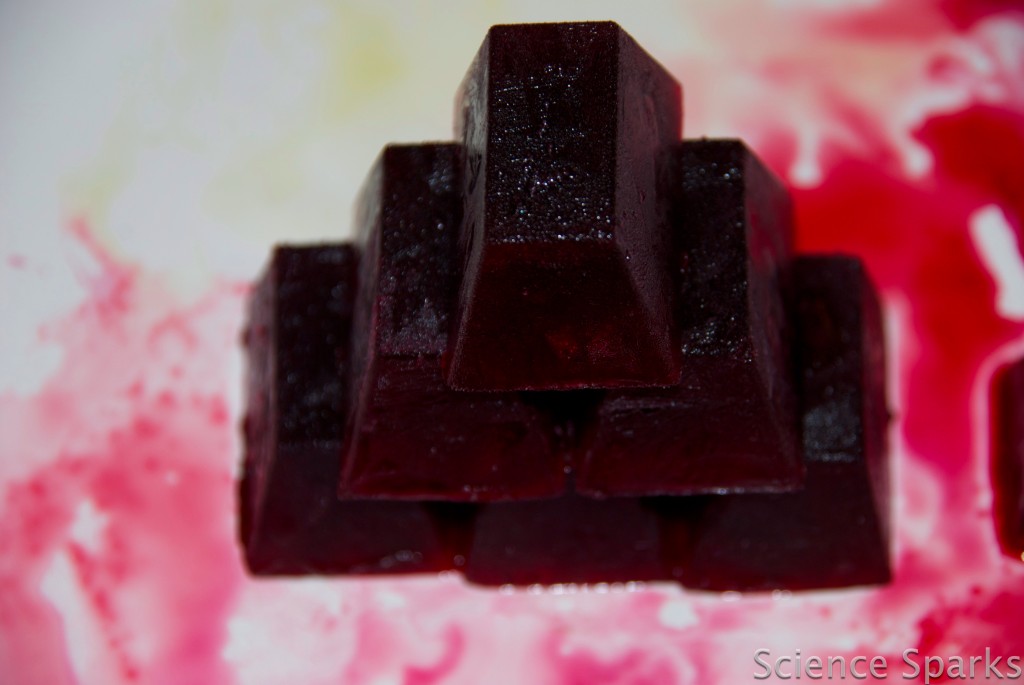
What you need for colour-mixing ice
Different colour fruit juices
Ice cube tray
Freezer
Tray or plate
Colour mixing ice instructions
Place different coloured fruit juices in an ice cube tray and place in the freezer until frozen.
Once frozen, remove the ice cube trays from the freezer and let them melt until they are no longer sticky.
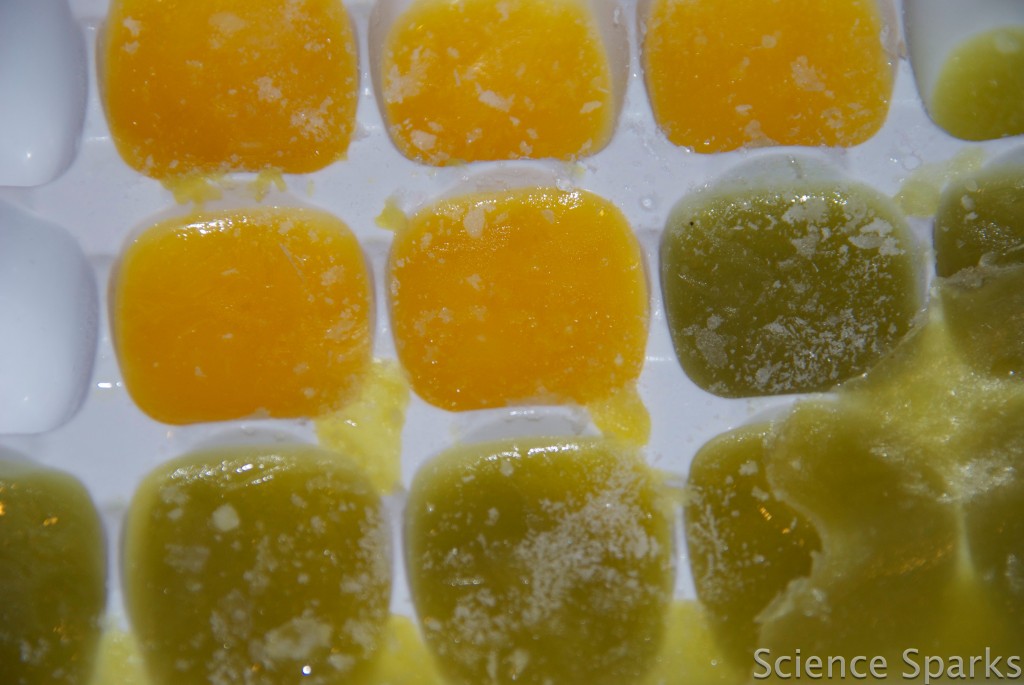
Tip the juice cubes out of the tray and choose different coloured cubes to mix up.
We discussed what colours we thought we could create when the fruit juice cubes melted together.
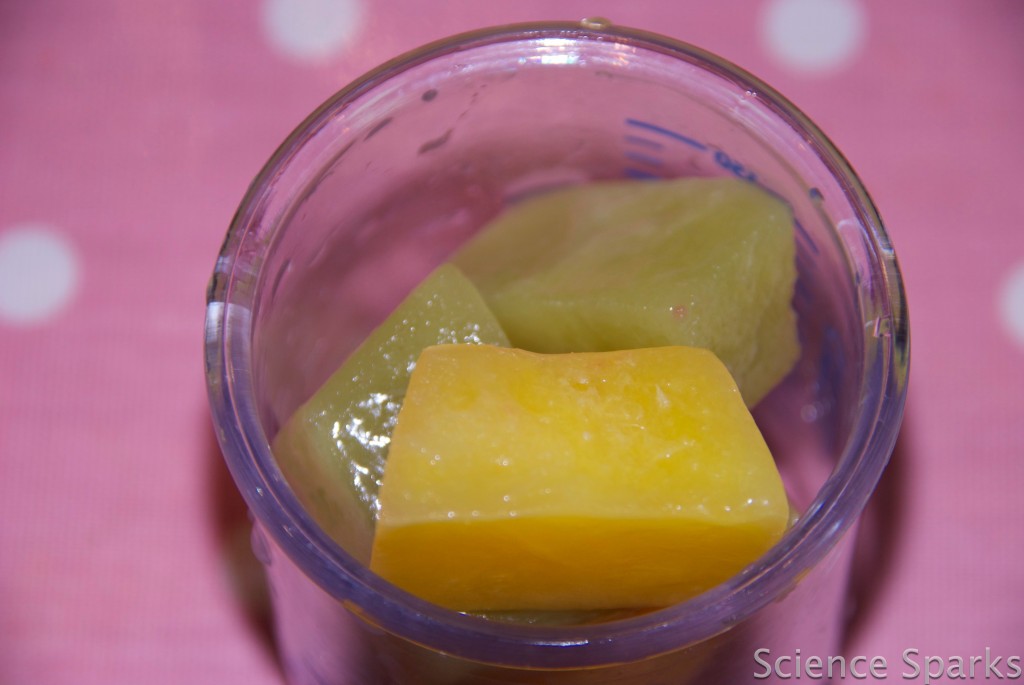
How can you make the ice melt faster?
We were a little impatient, so we tried to find a way to make the juice cubes melt faster.
We crushed them up and held the cubes to warm them with our hands, and before long, we had a slushy brown coloured juice drink!
If it had been a sunny day, we could've also left the cubes in the sun to melt.
In an ideal world, we'd have melted a yellow and blue drink to make green or a blue and red drink to make purple, but we didn't have all those colours to hand.
Extra challenge
Try to invent a drinks holder that protects your hands from the cold of the drink!
Adding foil to this one didn't help to protect our hands from the cold!!
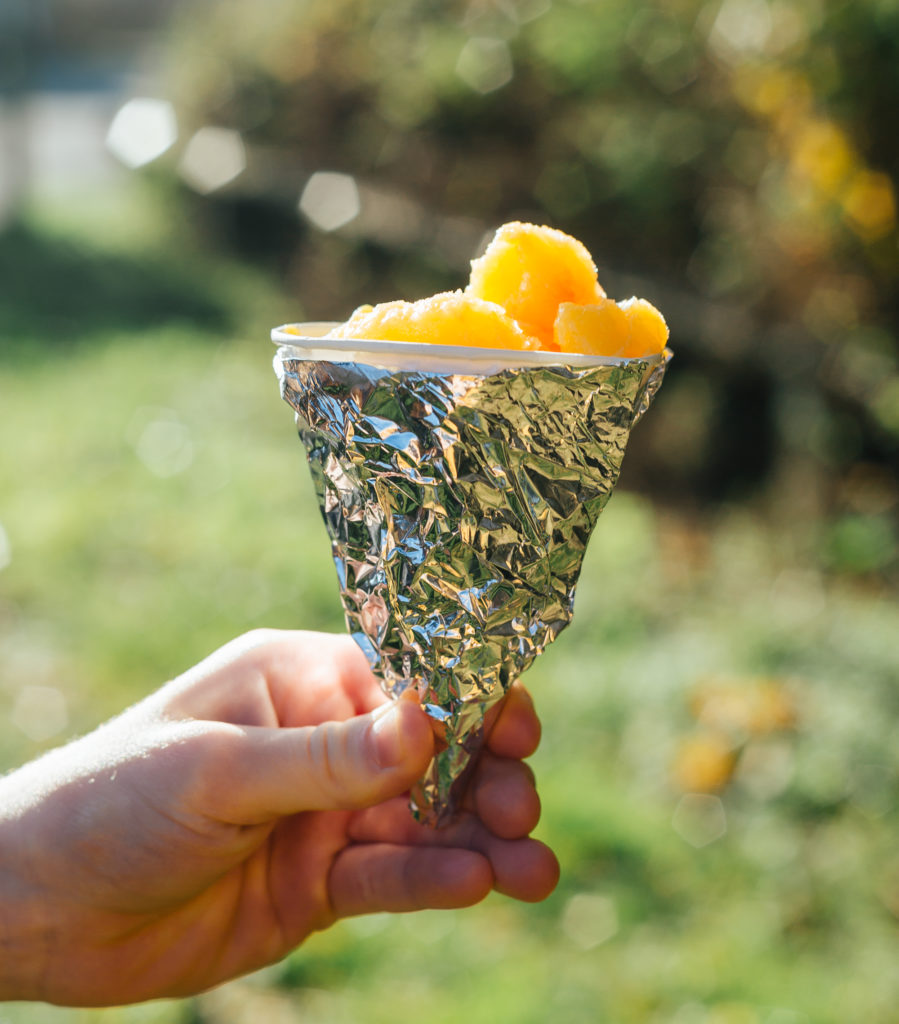
Why does water freeze?
Water can be a solid, liquid or gas. In liquid form, the water particles can move around freely, so the water takes the shape of its container. When you cool the water, the movement of the particles slows down, and they become tightly packed together, which means their shape cannot change easily.
Why is ice sticky?
Ice feels sticky because when you touch it, it immediately freezes the moisture in your skin, making the cube feel sticky.
Don't forget to check out our other ice experiments, too!
More easy science for kids
I've got 100s more easy science experiments perfect for home or school! Let me know if you try any.
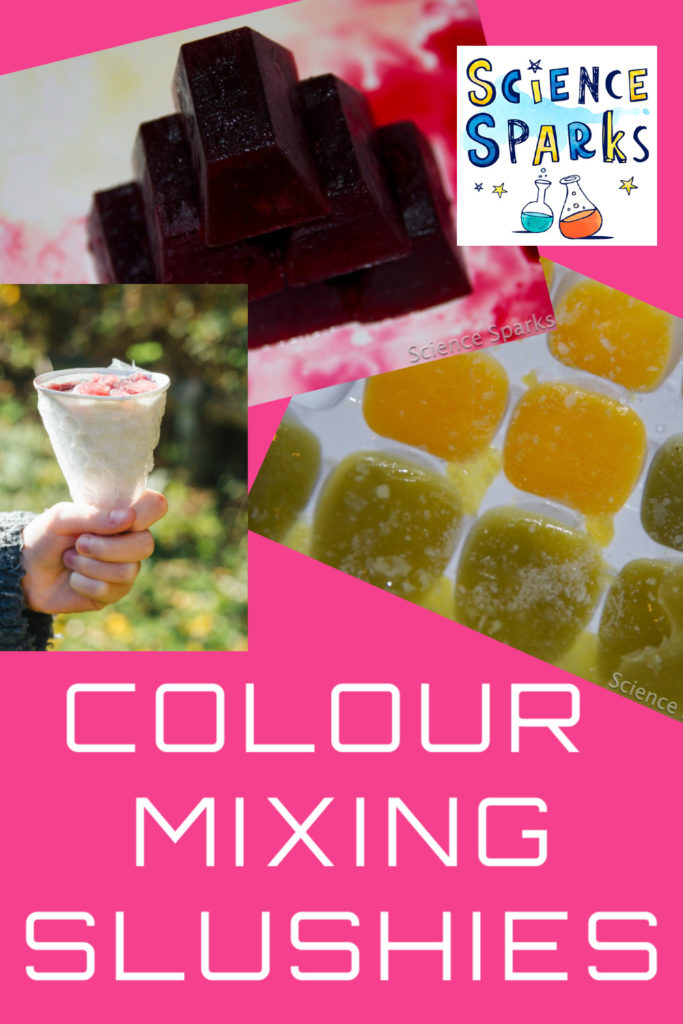
Last Updated on June 19, 2025 by Emma Vanstone

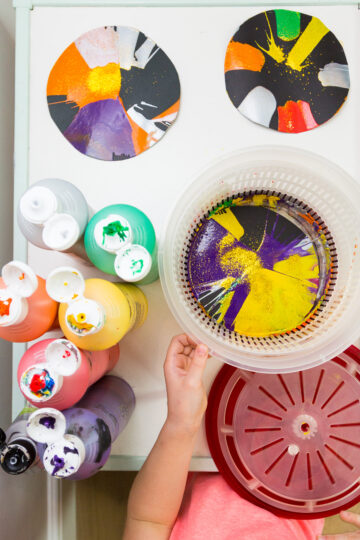
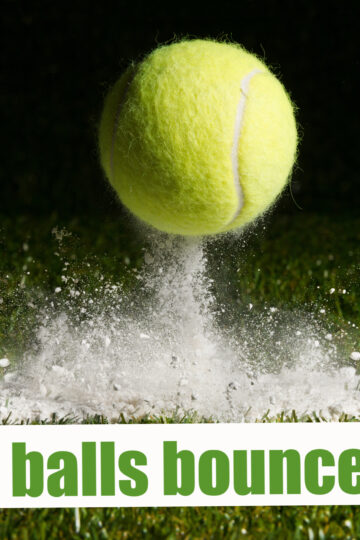
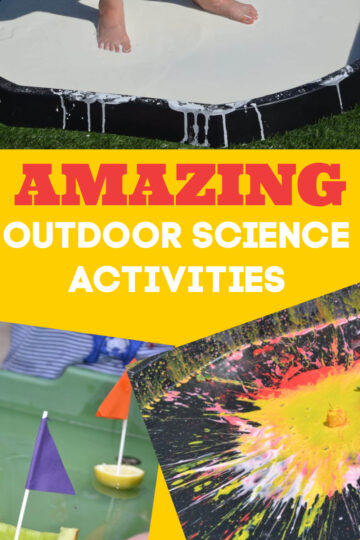
Ticia says
That would be fun! Thank you for linking up to Science Sunday!
Bethany says
We have red (punch) ice cubes in trays right now. 🙂
ScienceSparks says
oooh wow! They sound good!
FionaCambouropoulos (@coombemill) says
This looks like a good one. My kids are forever mixing different drinks together to experiment with the taste and look.
ScienceSparks says
Yes, we had lots of fun! xx
Kara says
Visiting from Tip Junkie. This is a fun way to learn about freezing. My sister home schools her kids. I should send her to this post for a great idea! Thanks!
cathy @ nurturestore says
I love all the different colours here. Thanks for joining in with the Play Academy 🙂
maggy,red ted art says
It has been a super duper fun frozen week. So many great ideas! Thank you.
Thanks for sharing on Kids Get Crafty!
Maggy
Mimi says
In liquid form the water particles can move around freely, so the water takes the shape of the container it is in. When you cool the water down the movement of the particles slow down and the particles become tightly packed together, which means its shape cannot change easily. We will come back to this later on and investigate in more detail.